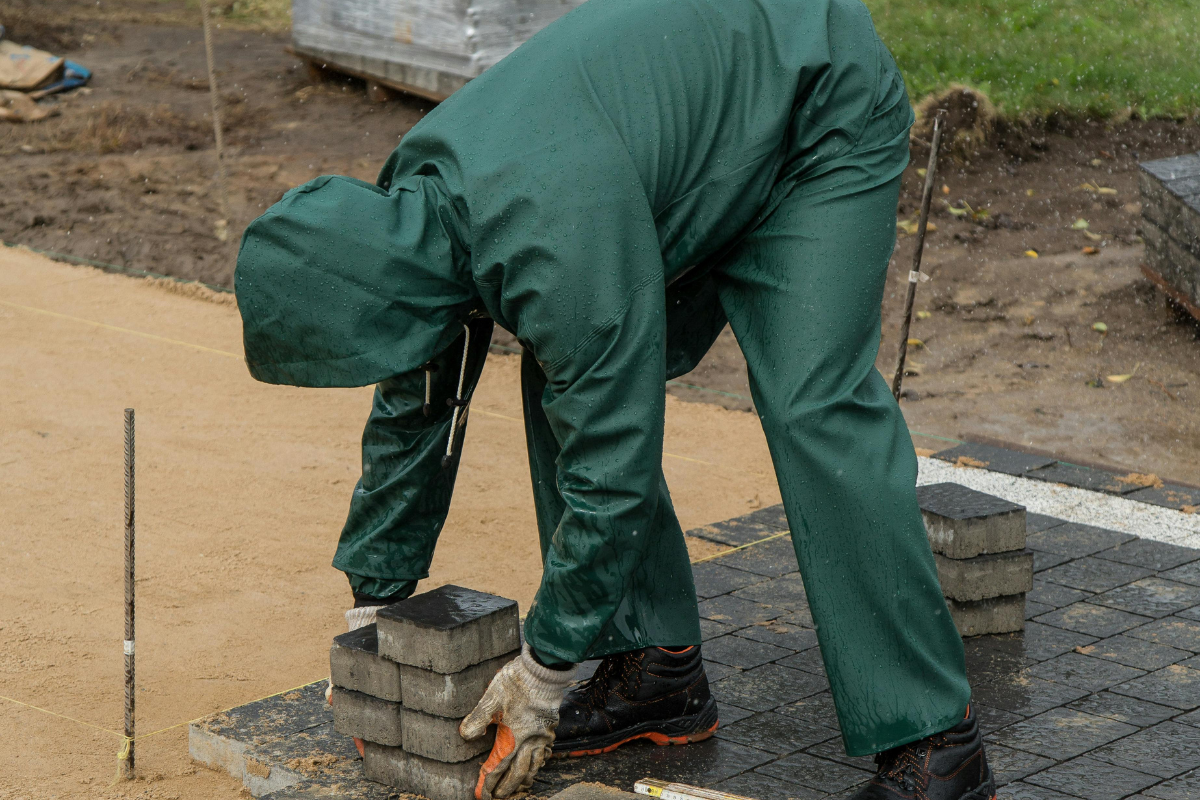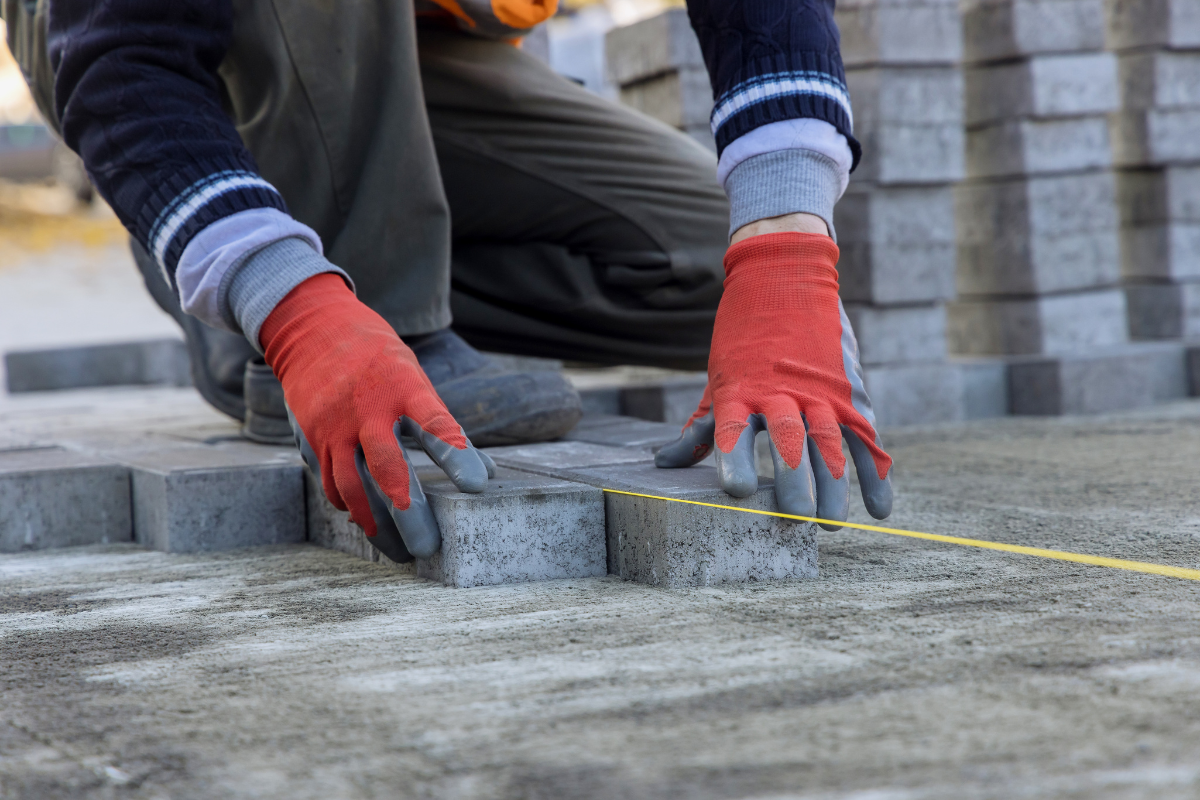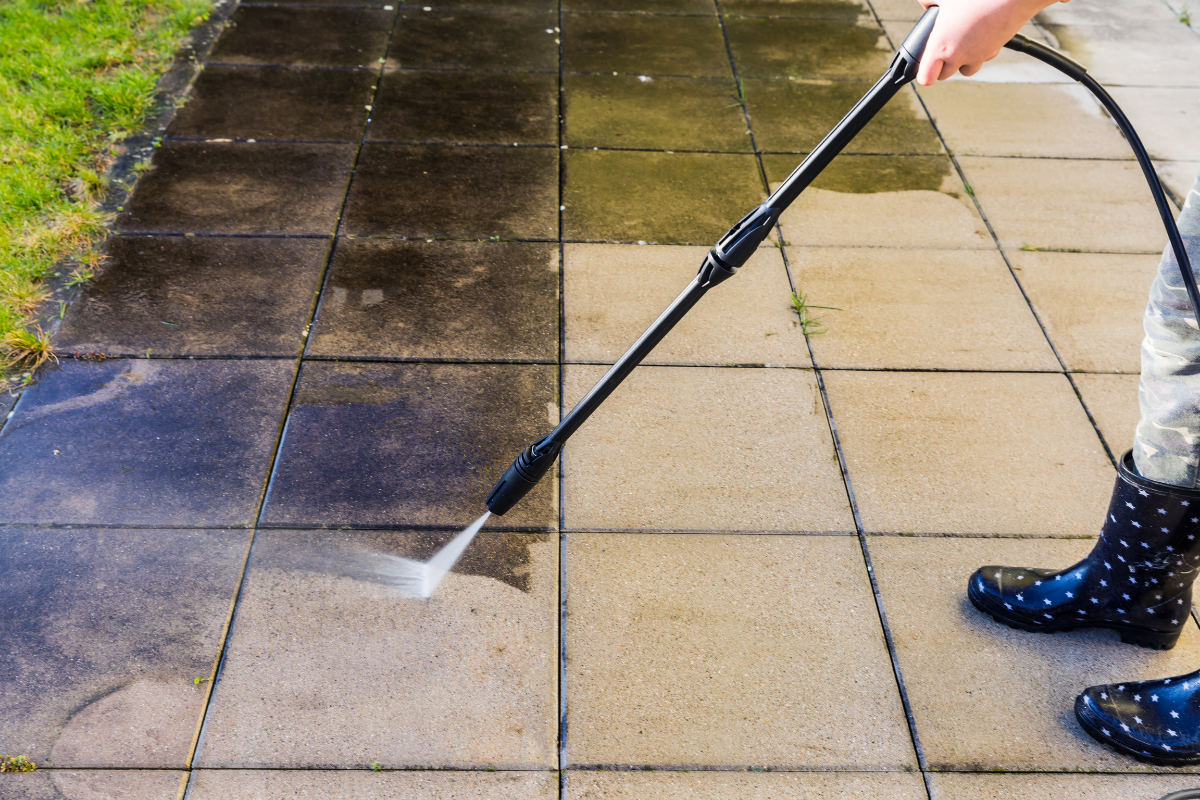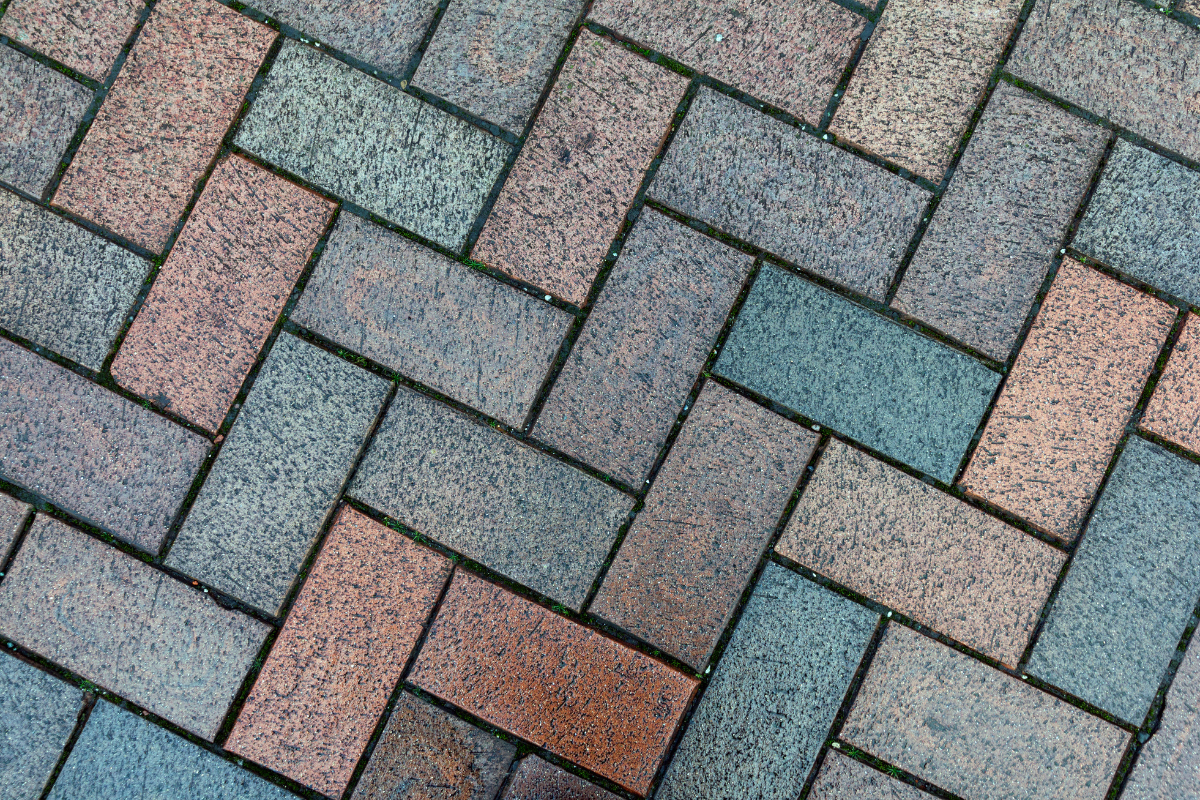
Lutz Homeowners’ Guide to Paver Cleaning and Maintenance



Pavers set the tone for a property long before a guest reaches the front door. In Lutz, where sun, sudden downpours, and oak pollen meet Florida sand, paver surfaces have to work harder than most. Driveways, pool decks, and patios look fantastic on install day, then slowly lose color, grow a film of algae, and shift just enough for weeds to settle in. You can keep them looking crisp without overpaying or damaging the surface if you know how to approach cleaning, joint care, and sealing with the local climate in mind.
I have cleaned and maintained pavers across Hillsborough and Pasco for more than a decade. The biggest lesson is simple: technique beats brute force. A pressure washer can either rescue a driveway or etch permanent Paver sealing maintenance scars into it. The right paver sealer can lock in color and keep sand from washing out, or it can turn milky after a summer storm if applied badly. What follows is a practical roadmap tailored for Lutz, anchored in the way our weather and soils actually behave.
What Florida’s Climate Does to Pavers
Heat and moisture drive almost every maintenance issue we see. UV exposure bleaches pigment and dries out solvent-based sealers faster than the label suggests. Warm, humid air feeds algae and mildew, especially in shady spots on the north and east sides of homes. Afternoon rains push fine sand out of the joints, then pull it across the surface as dirty rivulets.
Add in leaf tannins from live oaks and camphor trees, and you get tannin stains that can seem baked into the surface. Irrigation overspray introduces hard water minerals that leave a chalky crust. If your sprinklers pull from a well with iron, expect rusty halos around the arc.
The base under many Lutz driveways is compacted sand or crushed shell. Over time, water movement and vehicle traffic loosen joint sand. When joints open, pavers rack and wiggle, and tiny gaps invite sedge and crabgrass. Maintenance is partly about looks, but it is also about keeping the system tight so pavers support each other and shed water free pressure washing quote correctly.
Reading Your Pavers: Material and Joint Type
Not all pavers clean the same. Most residential hardscapes in Lutz use concrete pavers, which are porous, pigment-colored, and fairly durable as long as you avoid harsh acids. You also see clay brick pavers in older neighborhoods and high-end patios. Clay is dense and holds color well, but strong alkalis can haze it and some acids can soften the surface. Travertine and other natural stones appear around pools, and they call for gentler cleaners and low-pressure washing.
The joint material matters. Traditional sand surface cleaner for pavers washes out the easiest. Polymer-modified sand locks up when activated with water, sealing joints against washout and weeds, but it needs even wetting and careful clean-up. Open or cracked joints tell you to address the base and sand before you bring out a paver sealer. Sealing on loose joints usually traps problems rather than solving them.
Pressure Washing That Doesn’t Etch or Blow Out Joints
I meet plenty of homeowners searching for driveway pressure washing near me, and the range of results is wide. A cheap pressure washing service can make pavers look bright in the short term while stripping cream from the surface and carving the sand. You want enough pressure to lift algae and dirt, not enough to dig.
On typical concrete pavers, 1,200 to 1,800 PSI with a 25-degree tip is a conservative starting point. If you own a consumer machine with a 0-degree turbo nozzle, put that nozzle away for pavers. A surface cleaner head helps keep pressure even and speeds the job on driveways. For delicate clay pavers or natural stone, drop pressure closer to 800 to 1,200 PSI and let your cleaning solution do more of the work.
Always pre-rinse the area and work from an edge toward a drain path. Keep the wand moving, hold a steady distance, and rinse low spots twice so you don’t leave dirty water sitting. Expect to lose some joint sand from honest washing. That is fine if you plan to re-sand and seal. What you want to avoid is chasing dark spots with the tip until you leave tiger stripes.
Cleaning Solutions That Match the Stain
You rarely need heavy acid washing, and you should avoid it unless a pro is handling efflorescence or stubborn mineral deposits. Most paver cleaning in Lutz comes down to the right mix of surfactant and oxidizer, plus dwell time.
Algae and mildew respond to sodium hypochlorite, the active ingredient in liquid pool shock and many house washes. For pavers, a diluted mix in the range of 0.5 to 1 percent available chlorine, paired with a good surfactant, will loosen the green film in five to ten minutes. Keep plants wet before, during, and after you use bleach-based cleaners, and do not let the mix dry on the surface. Rinse thoroughly.
Leaf tannin stains fade with oxygenation more than brute force. An oxygen-based cleaner or a purpose-made tannin remover breaks the bond without harsh acid. Rust stains from irrigation require a specific rust remover, typically with oxalic or other organic acids, and very targeted application. Test a discreet spot, follow timing closely, and neutralize as directed.
Grease or polymer sand haze takes patience. A solvent-based paver cleaner can cut oily spots on a driveway, but many products soften sealers. If you have an existing paver sealer, check for compatibility first. For polymer haze, gentle agitation with a scrub pad and a mild acid cleaner applied precisely, then neutralized, usually does the job.
The Right Way to Re-sand Joints
Clean pavers look unfinished until the joints are tight again. Fresh sand helps lock the field, reduces edge chipping, and protects against weed growth. You can use regular masonry sand or polymeric sand. In Lutz, where we get hard rain and frequent irrigation, polymeric sand is worth the upgrade on driveways and high-traffic patios.
Bring the surface bone dry before you spread polymeric sand. Any residual moisture can cause clumping or weak activation. Sweep sand diagonally across the joints until they are filled to about an eighth of an inch below the chamfer. Use a leaf blower at low power to clear dust from the paver faces without pulling sand out of the joints. Then mist the surface with clean water in light passes, allowing the sand to hydrate and lock. Over-wetting floats the binders onto the paver faces and creates a stubborn haze. Under-wetting leaves the sand weak and prone to washout. Read the manufacturer’s coverage and timing recommendations, because they vary.
If you are planning a paver sealer, lock in a waiting period. Polymer sand needs time to cure dry. In our humidity, I give it 24 to 48 hours with no rain. Hurrying this step is one of the fastest ways to trap moisture and ruin a sealer application.
Sealing That Lasts Through Florida Summers
Search results for paver sealing near me can be a minefield of big claims and small print. Here’s the practical framework I use.
Sealer type matters more than the brand on the jug. You will mostly choose between water-based and solvent-based acrylics for concrete pavers, along with urethane or hybrid options for higher durability. Water-based paver sealer technology has come a long way. It resists whitening better in humid conditions and allows vapor to escape. Many modern water-based sealers deepen color nicely without the strong solvent odor that lingers. Solvent-based sealers can give a richer wet look, but they trap moisture easily if the surface is not very dry, and they can soften under high heat. Urethanes and two-part sealers provide excellent abrasion resistance for driveways and commercial sites, but they require precise mixing and application and usually cost more.
Penetrating sealers that leave a natural finish work well for clay pavers and natural stone, especially around pools. They reduce water absorption and staining without changing the surface sheen. Film-forming sealers, the ones that add gloss and deepen color, can make a concrete paver’s pigment pop and help lock the joint sand. The trade-off is potential slipperiness in high-gloss products and a need for careful cleaning before reapplication to avoid buildup.
Timing is half the battle. Pavers and joints must be dry through their depth. After heavy rain or deep cleaning, two to three dry days is a safe window in Lutz. Surface temperature should sit roughly between 55 and 90 degrees. If the pavers are hot to the touch at midday, plan to seal in the morning or late afternoon. Watch dew points. High overnight humidity can flash moisture onto a fresh film and turn it cloudy.
Application is an art. I like a two-coat system for most driveways and patios. The first coat soaks in and ties down the sand. The second coat adds uniform color enhancement and protection. Use a low-pressure sprayer to lay out a wet edge and a microfiber pad or roller to even out coverage. Never flood low spots, which would dry as uneven blotches. Check the manufacturer’s square footage coverage per gallon, and resist the urge to over-apply, since extra sealer does not equal extra protection. It often equals a whitening headache.
How Often to Clean and Seal in Lutz
If you keep up with light maintenance, you can go longer between big interventions. Expect a 12 to 18 month re-seal cycle for high-sun, high-traffic driveways with film-forming acrylics. Protected patios and walkways often stretch to 24 months with water-based products. Penetrating sealers sometimes last two to three years because they do not form a film that wears.
Plan for a thorough cleaning twice a year. Spring is about algae and pollen. Fall is about leaf stains and joint top-offs before winter fronts bring heavy rain. In between, a monthly hose-down and spot cleaning prevents build-up. Use a blower to keep organic debris off the surface so you are not grinding leaf acids and dirt into the pores.
When to Call a Pressure Washing Service
Plenty of homeowners do their own paver cleaning in Lutz and do it well. The times I suggest hiring a pressure washing service are when you see any of these signs: widespread polymeric sand haze from a previous DIY attempt, cloudy or whitening sealer that needs stripping, deep rust from well irrigation, or uneven settlement that requires lifting and resetting pavers. Those jobs need the right chemicals, tooling, and judgement to avoid making the situation worse.
If you compare quotes, ask what pressure and tip they plan to use, whether they will re-sand with polymeric sand, and what brand and type of paver sealer they propose. Good contractors welcome those questions. Beware of anyone who promises a five-year sealer in our climate, or who wants to pressure wash a sealed surface at 3,500 PSI. Also ask about weather policy. Rescheduling to avoid a pop-up storm is a sign of a professional, not a stall.
Step-by-Step: A Smart DIY Washing and Sealing Weekend
This is the condensed version of a process that has worked across hundreds of driveways and patios.
- Day one: Dry sweep and blow the surface, pre-rinse, apply an appropriate cleaner, dwell for five to ten minutes, and rinse at controlled pressure. Focus on cleaning, not stripping. Allow the area to dry thoroughly.
- Day two: Inspect joints. Sweep in polymeric sand if needed. Compact lightly with a hand tamper or run a plate compactor with a protective pad for large areas. Blow off dust, then mist to activate the sand, following product instructions. Keep foot and vehicle traffic off the surface until dry.
- Day three or four, weather permitting: Confirm dry conditions. Tape off edges. Apply first coat of water-based paver sealer with a sprayer and microfiber applicator, working in small sections. Wait the labeled recoat window, then apply a second light coat for uniformity. Block traffic for 24 hours and avoid moisture for the first 12 hours.
That sequence balances speed with safety. If a summer storm threatens, pause after cleaning and wait for a stable forecast before you re-sand. Rushing costs more later.
Common Mistakes and How to Avoid Them
Overpressure is the classic error. Etching shows up as a fuzzy, rough texture that collects dirt faster next time. Keep pressure conservative and let chemicals and dwell time do the heavy lifting.
Sealing too soon after rain or washing leads to whitening. If you are unsure about moisture trapped in the joints, tape down a small square of plastic overnight. Condensation under the plastic means you need more dry time.
Using the wrong cleaner for the stain can fix one problem and cause another. Acid on a surface with fresh polymer sand can dissolve binders. Bleach on rust barely touches it but may lighten surrounding areas unevenly. Always test a small spot.
Over-application of sealer causes streaks, peel, and slipperiness. Thin, even coats beat a heavy flood coat every time. If you want more gloss, choose a glossier product rather than burying the surface in additional layers.
Ignoring drainage sets you up for repeated algae and efflorescence. If water consistently sits in a birdbath depression, consider lifting those pavers, checking the base, and re-leveling. Functional grading reduces the frequency of cleaning.
Edge Cases: Clay, Travertine, and Cool Decks Around Pools
Clay pavers are denser and often smoother than concrete pavers. They resist residential paver sealing fading but can show white haze if an alkaline cleaner dries on the surface. Use neutral pH or mild acidic cleaners designed for clay, rinse thoroughly, and consider penetrating sealers that preserve the matte finish.
Travertine and shellstone demand gentle handling. They are sensitive to acids, including many rust removers. Keep pressure lower, use stone-safe cleaners, and lean on penetrating sealers that will not create a film. Around pools, avoid glossy, film-forming sealers that can become slippery when wet. Many homeowners ask for washing and sealing around pool cages. In that setting, less shine and more traction is the right call.
If your coping or deck includes a spray texture or cool deck, treat it separately. These coatings can chalk under strong bleach and scar at high pressure. Use diluted cleaners and a wider fan tip, and rinse screens and aluminum cage frames to prevent oxidation streaks.
Cost, Value, and Timing
A DIY approach for an average two-car driveway might run 150 to 300 dollars in materials for cleaner, polymeric sand, and a quality water-based paver sealer, plus equipment you may already own. A professional cleaning, re-sanding, and sealing package for the same driveway in Lutz typically falls in the 600 to 1,200 dollar range depending on size, condition, and product type. If stripping a failed sealer is required, that number rises because of chemical cost and labor.
Done right, sealing reduces the time you spend scrubbing algae, keeps joint sand in place during summer storms, and preserves the color that you paid for. If you ever plan to sell, curb appeal is not a vanity expense. A clean, uniform driveway and patio set the tone for an inspection that buyers find reassuring.
Quick Reference: Choosing a Paver Sealer
- For high-traffic concrete driveways with lots of sun: water-based acrylic, low to medium gloss, breathable, two coats.
- For shaded patios with persistent moisture: penetrating or natural-look sealer, prioritize vapor permeability.
- For clay brick: penetrating sealer or a low-build water-based product designed for clay.
- For pool decks and natural stone: penetrating, slip-resistant, no film.
Notice that gloss is a design choice. Performance hinges more on breathability, UV stability, and proper prep. If you like a richer color without shine, many water-based paver sealer lines offer an enhanced natural look that deepens pigment without a glossy film.
Working With the Weather You Actually Have
Lutz weather sets the schedule. Plan washing for mornings when the surface is cool, then let the sun help you dry the field. aim to re-sand and seal on a stretch of two to three dry days, ideally with daytime humidity below 70 percent and no overnight storms. If you are searching for paver sealing near me during the heart of summer, expect reschedules. A good contractor will not seal with rain on the radar.
During oak pollen season, rinse more often and blow debris off before it compacts. If irrigation runs at dawn and oversprays into the driveway, adjust the heads so you are not bathing your pavers daily. Small tweaks in watering save you hours of cleaning.
A Maintenance Rhythm That Works
Think of paver care as a rhythm rather than a project you dread every few years. A quick monthly Water-based paver sealer rinse, a spring and fall wash, joint touch-ups when you see gaps, and a thoughtful re-seal every one to two years keep your hardscape looking new. Whether you do it yourself or hire a pressure washing service, the goals are the same: protect the joints, respect the surface, and work with the climate.
If you are staring at a white, cloudy sealer, a driveway flecked with rust from a well, or a clay patio with streaks from a past acid wash, resist the instinct to escalate with more pressure. The fix is almost always in the chemistry, the water, and the timing. Your pavers can come back from almost anything if you approach them with patience and the right plan.
Bulletproof Pavers
Address: 1523 Green Meadow Dr, Lutz, FL 33549
Phone: (813) 401-0693